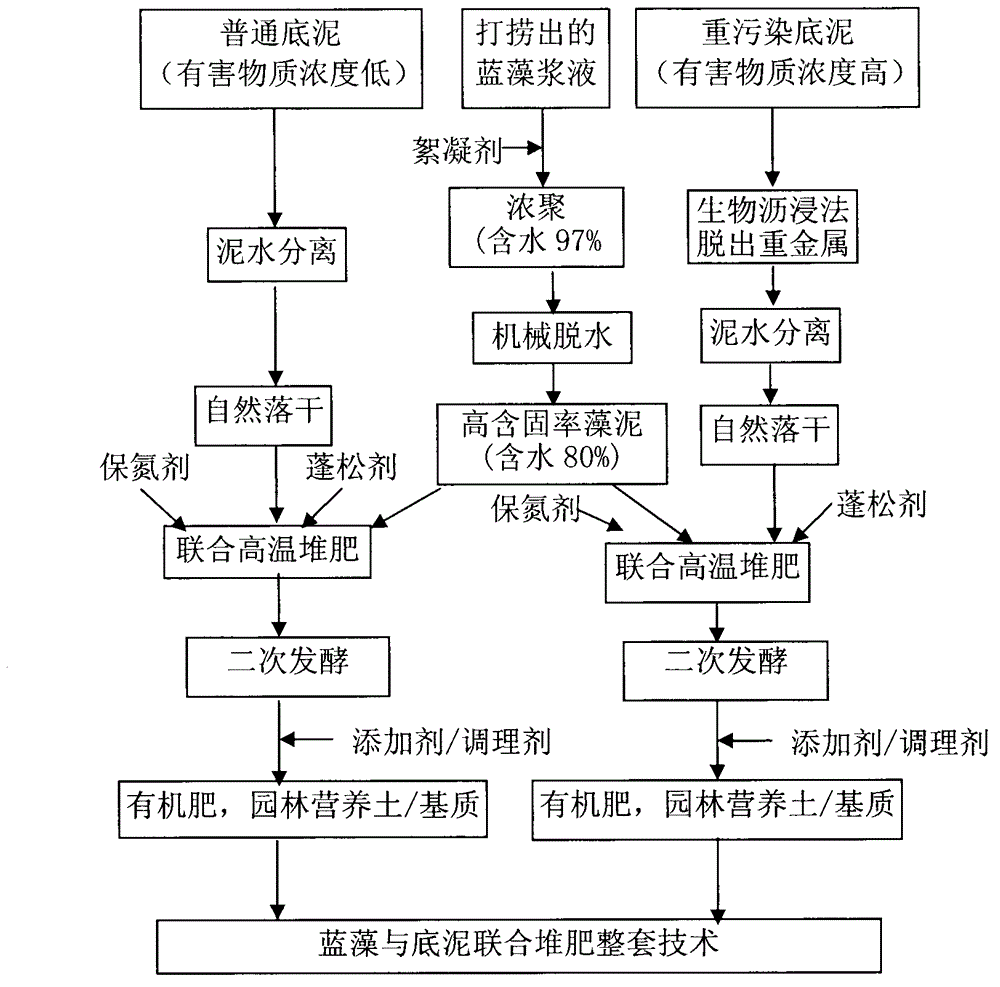Method for co-composting of blue-green algae and polluted bottom sediment
A technology for polluting sediment and cyanobacteria, applied in the field of environmental engineering, can solve problems such as heavy metal pollution cannot be effectively controlled, and achieve the effects of rapid composting, improving physical and chemical properties, and shortening fermentation cycle
- Summary
- Abstract
- Description
- Claims
- Application Information
AI Technical Summary
Problems solved by technology
Method used
Image
Examples
Embodiment Construction
[0028] Examples of the present invention are described below.
[0029] 1. Harmless treatment of sediment polluted by heavy metals and joint resource utilization technology with blue-green algae:
[0030] According to the technique mentioned in the present invention, according to flow process (see attached figure 1 ) to treat the sediment polluted by heavy metals from Taihu Lake. About 50 tons of contaminated bottom mud with a solid content of 20% was taken, and it was determined that there was a certain amount of heavy metal pollution, and it had an odor.
[0031] Bioleaching detoxification and dehydration of detoxified sediment: add bioleaching microbial inoculum and fresh polluted sediment at a volume ratio of 1:9 to an effective volume of 60M 3 In the reactor, under the condition of ventilation and aeration, stir and mix evenly, and at a temperature of 25°C, after 48 hours of bioleaching treatment, the pH of the bottom sludge drops to about 3, and the pH in the bottom slu...
PUM
 Login to View More
Login to View More Abstract
Description
Claims
Application Information
 Login to View More
Login to View More - R&D
- Intellectual Property
- Life Sciences
- Materials
- Tech Scout
- Unparalleled Data Quality
- Higher Quality Content
- 60% Fewer Hallucinations
Browse by: Latest US Patents, China's latest patents, Technical Efficacy Thesaurus, Application Domain, Technology Topic, Popular Technical Reports.
© 2025 PatSnap. All rights reserved.Legal|Privacy policy|Modern Slavery Act Transparency Statement|Sitemap|About US| Contact US: help@patsnap.com



